For working professionals
Domains
Doctorate
Artificial Intelligence
Data Science
Gen AI & Agentic AI
MBA
Marketing
Management
Education
Doctorate
For All Domains
IIITB & IIM, Udaipur
Chief Technology and AI Officer ProgramSwiss School of Business and Management
Executive Doctor of Business Administration from SSBMEdgewood University
Doctorate in Business Administration by Edgewood UniversityGolden Gate University
Doctor of Business Administration From Golden Gate UniversityRushford Business School
Doctor of Business Administration from Rushford Business School, SwitzerlandGolden Gate University
MBA to DBA PathwayLeadership / AI
Golden Gate University
DBA in Emerging Technologies with Concentration in Generative AIGolden Gate University
DBA in Digital Leadership from Golden Gate University, San FranciscoArtificial Intelligence
Degree / Exec. PG
IIIT Bangalore
Executive Diploma in Machine Learning and AIOPJ Global University
Master’s Degree in Artificial Intelligence and Data ScienceLiverpool John Moores University
Master of Science in Machine Learning & AIGolden Gate University
DBA in Emerging Technologies with Concentration in Generative AIExecutive Certificate
IIITB & IIM, Udaipur
Chief Technology and AI Officer ProgramIIIT Bangalore
Executive Programme in Generative AI for LeadersupGrad | Microsoft
Gen AI Foundations Certificate Program from MicrosoftupGrad | Microsoft
Gen AI Mastery Certificate for Data AnalysisupGrad | Microsoft
Gen AI Mastery Certificate for Software DevelopmentupGrad | Microsoft
Gen AI Mastery Certificate for Managerial ExcellenceOffline Bootcamps
upGrad
Data Science and AI-MLData Science
Degree / Exec. PG
O.P Jindal Global University
Master’s Degree in Artificial Intelligence and Data ScienceIIIT Bangalore
Executive Diploma in Data Science & AILiverpool John Moores University
Master of Science in Data ScienceExecutive Certificate
upGrad | Microsoft
Gen AI Foundations Certificate Program from MicrosoftupGrad | Microsoft
Gen AI Mastery Certificate for Data AnalysisupGrad | Microsoft
Gen AI Mastery Certificate for Software DevelopmentupGrad | Microsoft
Gen AI Mastery Certificate for Managerial ExcellenceupGrad | Microsoft
Gen AI Mastery Certificate for Content CreationOffline Bootcamps
upGrad
Data Science and AI-MLGen AI & Agentic AI
Gen AI & Agentic AI
Masters

Paris School of Business
Master of Science in Business Management and TechnologyO.P.Jindal Global University
MBA (with Career Acceleration Program by upGrad)Edgewood University
MBA from Edgewood UniversityO.P.Jindal Global University
MBA from O.P.Jindal Global UniversityGolden Gate University
MBA to DBA PathwayExecutive Certificate
IMT, Ghaziabad
Advanced General Management ProgramMarketing
Executive Certificate
upGrad | Microsoft
Gen AI Foundations Certificate Program from MicrosoftupGrad | Microsoft
Gen AI Mastery Certificate for Content CreationOffline Bootcamps
upGrad
Digital MarketingManagement
Degree
O.P Jindal Global University
MSc in International Accounting & Finance (ACCA integrated)
Paris School of Business
Master of Science in Business Management and TechnologyGolden Gate University
Master of Arts in Industrial-Organizational PsychologyExecutive Certificate
Education
Education
Northeastern University
Master of Education (M.Ed.) from Northeastern UniversityEdgewood University
Doctor of Education (Ed.D.)Edgewood University
Master of Education (M.Ed.) from Edgewood UniversityFor fresh graduates
Domains
Data Science
Management
Marketing
Data Science
Bootcamp
Offline Bootcamps
upGrad
Data Science and AI-MLManagement
Marketing
Bootcamp
upGrad Campus
Advanced Certificate in Performance MarketingOffline Bootcamps
upGrad
Digital Marketing- Study abroad
More
RESOURCES
BlogsCutting-edge insights on education
WebinarsLive sessions with industry experts
TutorialsMaster skills with expert guidance
Learning GuideResources for learning and growth
COMPANY
Careers at upGradYour path to educational impact
Hire from upGradTop talent, ready to excel
upGrad for BusinessSkill. Shape. Scale.
Offline CentresHands-on learning, near you
Experience centerImmersive learning hubs
About usOur vision for education
OTHERS
Refer and earnShare knowledge, get rewarded
Core Java Courses
Java Core sets the benchmark for the remaining editions of Java. Moreover, Core Java is essentially a collection of libraries.

Core Java Course Overview
If you are interested in learning Java, you must understand core java concepts. The Core Java adopts the concept of WORA (write once and run anywhere). No need to compile the code - you can use it on other platforms too. Java can be employed in web-based and client-server applications. Plus, you can use Core Java in several technologies like SalesForce, Hadoop, Selenium, Data Analytics, etc.
Specifically, the word ‘Core’ narrates the fundamental concept of any topic, and here the ‘Core Java’ delineates the basic concept of the Java programming language. Indeed, Java is one of the renowned and extensively used programming languages. To start learning Java, a beginner must start with Core Java and then proceed to Advanced Java.
After getting the overview of Core Java and the significance of Java basic concepts for beginners, a question may arise - why go for Core Java. we’ll answer that question in the sections below.
Java is useful for Android app development. Undoubtedly, the Android market is vast, and the demand for mobile programmers is increasing. Java allows you to personalize your mobile experience. Learning Core Java streamlines picking up Android development kits/frameworks which export to mobile platforms.
Note that Core Java is merely a part of Java that stands for J2SE, comprising all the fundamentals of Java, including package details, principles, and more. The core java topics and basic concepts of Java include everything from special operators to OOPS concepts and a linked list to array lists.
The core java 8 tutorial and the relevant tutorial depict the usefulness of Core Java as a computing platform for developing Java applications for servers and desktops.The basic java tutorial for beginners will give you an overview of the usefulness of Core Java in designing apps for server and desktop environments.
The best way to learn core java is to begin with individual features.
Here are the salient features of Java -
![]()
1. Object-Oriented concept:
Everything is an object in Java. Being based on the Object module, Java can be conveniently extended.
2. Platform Independent:
Certain programming languages like C and C++ are platform-independent. But when Java is compiled, the corresponding process is not accomplished in platform explicit machine.
Instead, it is completed into platform-independent byte code. The corresponding byte code is shared on the web and inferred by the Virtual Machine (JVM) irrespective of the platform it is operated on.
The best way to learn core java is to understand its fundamentals and then implement it on various platforms since it is platform-independent.
3. High security:
The high security facilitates the development of virus-free, tamper-free systems. Moreover, the authentication methods are dependent on public-key encryption.
4. Architecture-neutral:
Java compiler creates an architecture-neutral object file format. Consequently, the compiled code can be executed on several processors along with the existence of the Java runtime system.
5.Portable:
It is architecture-neutral, and there are no restrictions on implementing the specification. Hence, it is portable. Note that the Java compiler is written in ANSI C along with a spotless portability boundary (this boundary is a POSIX subset).
6. Error-free:
Java is renowned for being robust because it aims to discard error-prone incidences. It accomplishes this by focusing on checking the compile-time error and runtime error.
7. Easy to learn:
If you correctly understand the OOP concept, it becomes easier to understand Java fundamentals and master them.
If you are determined to build a programming background, you can learn core java online for free. Once you have learned the fundamentals, you can start the core java 8 tutorial and learn the core java advanced concepts.
8. Efficient performance:
Being an interpreted language, Java cannot operate as quickly as a compiled language such as C or C++. However, Java presents an efficient performance by using a just-in-time compiler.
9. Multi-threaded:
The multithreaded feature of Java makes it possible to write programs that can accomplish several tasks concurrently. This feature enables the developers to develop interactive apps that operate flawlessly.
10. Perfect for the distributed environment:
Java is primarily developed for the distributed environment of the Internet. You can develop programs to execute on computer networks. Moreover, Java has a distinct class library that facilitates communication through TCP/IP protocols. Compared to C and C++, creating network connections in Java is easier.
Implied from the name, JDK is a comprehensive Java development kit that covers everything, including Java Runtime Environment (JRE), compiler, Java docs, Java debuggers, etc. You must install Java JDK on our system to execute the program in Java. Once installed, it helps you create, compile and execute the Java program.
JDK comprises JRE. Installing JRE enables the Java program to run. However, you can’t compile it. Plugins, applet support, JVM, and a browser are included in JRE. To run a Java program, a computer requires JRE.
Java Virtual Machine (JVM) is an engine that presents a runtime environment to run the Java applications or code. It transforms Java bytecode into machine language. Note that JVM is a component of the Java Runtime Environment (JRE). The compiler generates machine code for a specific system in other programming languages. But, the Java compiler generates code for a Virtual Machine recognized as JVM.
If you aim to learn core java and have a strong foundation of basic java learning, you must master core java basics. Whichever core java course begins with explaining the basics of Java core and then proceeds to the core and advanced java concepts. The core java learning path includes all the sections discussed here.
So, if you want to learn core java and master core java programming, clear the following fundamental concepts:
5.1 Variables in Java
Variables are defined in the form of a location in the system memory where values are saved. Also recognized as identifiers, each variable has a name, a value, and a type.
5.2 Data types in Java
They represent the types of data that a value can have. Two primary data types are built-in/primitive data types and user-defined data types.
The subtypes of primitive data types in Java are byte, short (2 bytes), integer (4 bytes), long (8 bytes), float (4 bytes), character (2 bytes), double (8 bytes), and boolean(1 bit). The user-defined data types include class, object, array, string, and interface. The later section of the core java basics will explain these data types in detail.
5.3 Keywords in Java
The words with unique meanings in Java programming are called keywords. Examples include main, int, static, public, void, etc. Plenty of keywords exist in Java - you can readily find them on the internet for core java programming.
5.4 Operators in Java
Operators in Java assist you in carrying out various kinds of operations. It is impossible to clear the java basic concepts for beginners without learning the operators. Seven types of operators in Java are discussed below.
![]()
1. Arithmetic operators:
They assist you in performing arithmetic operations. Two operands are required. The list of arithmetic operators: +, -, /, *,% (MOD).
2. Logical operators:
If the need arises to carry out operations on logical combinations of boolean (true/false) values then logical operators are useful. These binary operators use two operands. Three logical operators are used in Java - &&(AND), ||(OR), !(NOT).
3. Relational operators:
Also known as comparison operators, they allow you to compare any two values. Relational operators in Java are <, <=, >, >=, ==, !=.
4. Assignment operators:
If you want to assign values of any expression to a specific variable, then assignment operators are used. It also covers a shorthand operator. The assignment operators in Java are: =, +=, -=, *=, /=, %=.
5. Bitwise operators:
Bitwise operators help to perform operations on data at the bit level. Some of the bitwise operators in Java are & (AND), | (OR) , ^ (NOT), >> (Right Shift), << (Left Shift), etc.
6. Increment and decrement operators:
They allow you to increase or decrease the value of a variable by 1. Two types are available, i.e., pre and post, and they are named pre-increment (++x) or pre-decrement (–x).
7. Ternary operators:
Also recognized as conditional operators, they work on three operands. It executes such that it evaluates expression1 if the condition is true else expression2 will be assessed if the condition turns false.
5.5 String handling
Understanding all the concepts of Core Java is essential if you aim to learn complete core java in a simple way. One of the most important concepts is String Handling.
In Java, the String is a class. Every object and string of this class represents a sequence of characters written within double-quotes. Moreover, the String class is handy for creating and working on strings. If you want to store text in Java, you can use strings. They work identically as an array of char values.
Examples of strings can be any word like “hello”. In Java, the string is immutable. So, once prepared, their values remain unchanged.
The following example shows how to create a String:
class Strings {
public static void main (String args[]) {
String s = "Learn Java";
System.out.println(s);
}
}
The output will be: Learn Java
String Handling takes place with the use of String Class Methods. Various methods are used in strings, and stored in java.lang.String class in which java.lang is a package.
1. int length()
2. int compareTo(String)
3. int compareToIgnoreCase(String)
4. boolean equals(String)
5. boolean equalsIgnoreCase(String)
6. String concat(String)
7. String toUpperCase()
8. String toLowerCase()
9. char charAt(int)
10. String format()
11. String substring()
12. boolean contains(String)
13. String replace(String1, String2)
14. String replaceFirst(string1, string2)
15. String replaceAll()
16. int indexOf(String)
17. String trim()18. String valueOf()
18. String valueOf()
19. boolean startsWith(String)
20. boolean endsWith(String)
21. int lastIndexOf()
22. boolean isEmpty()
23. int hashCode()
24. String[] split()
25. char[] toCharArray()
26. String toString()
27. String join()
5.6 Exception handling
An undesirable event that takes place during execution is known as an exception. It disturbs the usual flow of the program, which usually leads to the termination of the app or program.
There can be various reasons behind the generation of exceptions in Java. Some of them are unacceptable data input, attempting to access an array element with an index higher than the size of the array, trying to access a non-existing file in a program, network issues, etc. But Java boasts a robust system for dealing with these errors and ultimately avoiding the termination of the specific program.
Whenever Java encounters an exception, an object named ‘Exception object’ is created and assigned to the Java-Runtime System (JVM). The whole program is searched to match the exception handler with the type of exception that occurred. If nothing is found, the default exception handler will show a message to the user stating the information of the exception that took place.
The core java programming examples for exception handling help you understand its concept better. For instance, if you divide a number by zero. It will lead to the generation of exceptions.
5.7 MultiThreading
Several processes (instances) can exist in an application. All these processes can be handed off as a single thread or multiple threads. Multithreading helps to carry out numerous tasks simultaneously.
In Java, a single thread is the smallest and most lightweight element of processing. Note that Java uses threads through a “Thread Class”. On the other hand, multithreading is a process of operating two or more threads concurrently. It is also known as concurrency in Java.
Unique aspects of multithreading in Java:
- It can maximize CPU utilization.
- Every thread runs parallel to one another.
- Multiple threads don’t assign separate memory areas, so they save memory.
- They don’t block users since threads are independent.
- Because threads are independent, other threads will not be affected if one thread encounters an exception.
5.8 Applet
An applet is a unique form of Java program which operates in a Java-enabled browser. Typically, the applet is embedded in a web page and operates in the browser.
They are tiny Java applications accessible on an Internet server and conveyed through the Internet. Moreover, they can be automatically installed and executed as an element of a web document.
Once a user receives an applet, it can generate a graphical user interface. The partial access to resources allows it to execute complex calculations without any risk of data integrity breaches or viruses.
A class should extend java.applet.Applet class to create an applet. Note that an Applet class doesn’t possess any main() method; it is observed with the help of JVM.
Here is an example demonstrating the use of Applet in Java:
import java. awt.*;
import java.applet.*;
public class ABC extends Applet
{
public void paint(Graphics g)
{
g.drawString("Hello", 30, 30);
}
}
Here, the height and width statements denote the dimensions of the display area being used by the applet.
5.9 AWT & EventHandling
The working of Abstract Window Toolkit (AWT) is based on event-driven programming that processes user actions. These actions trigger all contemporary window systems programming. In the AWT, every user action relates to an abstract set of items known as events.
An event narrates a specific user action, and the program actively collects user-generated events. Moreover, the Java runtime informs the program whenever a unique event takes place. Those programs that manage user interaction in this way are termed event-driven.
Four types of classes provided by Event Handling are:
- Event Adapters
- Event classes
- Event Sources
- Event Listeners
5.10 Datatypes and variables
A variable in Java is the name of a reserved area assigned in memory. In other words, it is the name of a memory location.
Here is the example:
int var = 15 //here var is variable
Note that in Java, all the variables should be declared before being used. The syntax to declare a variable in Java is:
type identifier [ = value][, identifier [= value] ...] ;
Types of variables:
1. Local variable: Declared in the method
2. Instance variable: Declared in methods, blocks, or constructors.
3. Static variable: Declared as static; it can’t be local.
4. Instance variable: Declared within the class but outside the method; it is not declared static.
Type is a Java data type, and the identifier is the name of a variable. If you want to declare multiple variables of a particular type, use commas in the list.
Data types in Java
There are two types of data types in Java, they are:
1.Primitive data types:
Java supports 8 primitive data types: short, byte, int, float, long, double, char, and Boolean. They are predefined by the language and titled by a keyword.
2. Non-primitive data types:
Also known as reference data types, they allow the creation of reference variables with the help of defined constructors of particular classes. The value of corresponding variables can’t be changed. Moreover, they are helpful for accessing objects.
Objects, classes, and various array variables are included in the non-primitive data types. Note that the default value of a reference variable is null.
5.11 Statement and arrays
Statement:
Java permits the users to use two different array-specific syntax shortcuts. Both of them are used to initialize and construct a single statement. The syntax of a statement in Java includes two statements. The first statement declares, creates, and initializes in one statement. The second one declares, creates, populates, and assigns.
For example,
int y=45;
int[] number={10, 14, 70, y, 55};
Arrays:
Java arrays are objects consisting of elements of identical data types. They are data structures for storing identical elements. Moreover, they are objects of the dynamically generated class. An array’s elements are saved in adjacent memory locations. Note that you can only store a finite set of elements.
Being index-based, the first element is stored at the 0th index, and the second element is on the first index, and so on.
Java array accepts the Object class and employs the Cloneable and Serializable interfaces. Like Java, you can store objects or primitive values in an array. Furthermore, you can also make single-dimensional or multidimensional arrays in Java.
Key benefits of using Arrays in Java:
- The code optimization lets you efficiently fetch or sort the data.
- You can obtain any data situated at an index position with random access.
5.12 I/O Basics and Streams
Understanding I/O basics and streams is crucial if you want to get the basic knowledge of java. The java.io package comprises almost all the classes you may require to carry out Java's input and output (I/O) operations. A stream is a sequence of data. All such streams depict an input source and an output destination. Furthermore, the stream in the java.io package can support different data like localized characters, objects, primitives, etc.
A core java developer preparing for a basic java interview may be asked questions on I/O streams. So, here is the meaning of each of them.
InputStream: It is used to read data from a source.
OutputStream: It is used for writing data to a particular destination.
5.13 Threads:
Threads are used with the help of a ‘Thread Class’.
Two types of thread in Java are:
i. User thread
ii. Daemon thread
Whenever an application launches, a user thread is created. Subsequently, you can generate several daemon threads and user threads.
Example of creating a single thread:
public class SampleThread
{
public static void main(String[] args) {
System.out.println("An Example Thread");
}
}
The output will be: An Example Thread
5.14 Collections framework
The Java platform supports a collection framework. A collection is a cluster of objects denoted as a single unit. The collection framework in Java is an architecture that represents, stores, and manipulates data of the collections. Furthermore, the Java Collection framework defines many different interfaces and classes in a way that a group of objects is denoted as one unit.
With the introduction of the Collection Framework in the JDK 1.2, all collections are merged. It also offered a shared interface for them. Besides, it permitted various collections to work identically and with great interoperability. The collection framework ascertains that collections can be independently manipulated regardless of their implementation particulars. The basis of the Collection framework is dependent on the Collection interface. Hence, it comprises all the declarations of the methods the Collections would have.
Syntax of making objects of all Collection framework’s classes is identical, it is:
CollectionClassName <dataType> objName = new CollectionClassName()
Need for a collection framework:
An individual preparing to become a core java developer must know the requirement for a collection framework. Before the introduction of the Java Collections framework, the typical collections used were Hashtables, Arrays, and Vectors. But they didn’t have any shared interface and lacked a coalescing theme. Moreover, each structure had varied methods and syntax for retrieving and manipulating data. As a result, it created issues and a reduction in efficiency.
Advantages of using the Collection framework:
- It decreases programming effort because algorithms and data structures are readily available.
- It is performance efficient and can effortlessly extend and adjust to all collections.
- It allows Java developers to concentrate on applying these collections rather than worrying about their execution.
- It decreases the effort needed to learn, create, and implement APIs (Application Program Interface).
Types of Collection Interfaces:
- List
- ArrayList
- LinkedList
- Vector
- Stack
- Queue
- PriorityQueue
- Deque
- Set
- LinkedHashSet
- HashSet
- TreeSet
- SortedSet
- Map
- HashMap
- HashTable
- LinkedHashMap
- TreeMap
- SortedMap
When it comes to core java oops concepts, two programming procedures exist. One is procedural programming that emphasizes procedures to be followed instead of the data. The second is object-oriented programming which emphasizes the data and associated methods more than procedures
OOPS let the Java program be reusable and simpler to adapt and debug. Also, OOPS makes your program more organized and modular, and codes become short and easy to understand.
6.1 Features of Object-Oriented Programming Language:
To thoroughly understand core java oops concepts, firstly, you need to know the features of OOPS. In a basic java interview, you may be asked questions about OOPS.
Objects Oriented programming language supports every feature found in the standard programming languages. Furthermore, it also supports significant concepts that made it famous among various other programming methodologies.
Salient features of Object-Oriented programming language:
![]()
- Inheritance
- Polymorphism
- Encapsulation
- Data Hiding
- Reusability
- Overloading
6.2 Advantages of OOPs over Procedure-oriented programming language:
OOPs make maintenance and development easier; in Procedure-oriented programming language, it is difficult to deal with if the code grows with the project size.
OOPs offer data hiding; when using Procedure-oriented programming language, you can access global data from anywhere.
OOPs lets you simulate real-world events quite effectively. Moreover, it lets you come up with a solution to a realistic problem. But you can’t solve real-world problems when using the procedure-oriented programming language.
Class in Java:
A Class is identical to an object constructor. It works as a blueprint for making objects.
You need to use the keyword ‘class’ to create it.
Example:
Let’s create a class titled "Sample” with a variable y:
public class Sample {
int x = 10;
}
Object in Java:
Objects are created from a class, and they are entities of class. To create the one, mention the class name, then the object name, and then use the keyword new:
Since in the above example, we already created a class “Sample”, we can now use it to create objects.
Example:
Let’s create an object titled “mySample” and print the value of x:
public class Sample {
int x = 10;
public static void main(String[] args) {
Main mySample = new Main();
System.out.println(mySample.x);
}
}
To clear java basic concepts with examples for beginners, you must understand methods in Java.
Java Methods are the group of executable Statements which carry out certain specific actions. They are primarily used for any of these three reasons:
- To solve a challenging problem
- To reuse a piece of code to save time
- Conceal low-level details that will otherwise be puzzling and vague.
Example of Methods in Java:
The “maximum” method, as declared below, finds out a maximum of two integers,
int maximum (int x, int y)
Java Method Prototype:
It includes the type and number of arguments with the method return type. By employing the method Prototype, the compiler equates the types and number of arguments at compile time. Any wrong type or several arguments assists the compiler to detect an error easily. The return type of a method and Method Signature together make up Method Prototype.
The core java syllabus for beginners includes all vital Java concepts, including Interface. Therefore, it is one of the critical core java syllabus topics. The interface in Java is a technique to realize abstraction. Note that the Java interface supports only abstract methods, not the method body.
Example of Interface in Java:
Here, we use the Printable interface having only one method. Its implementation is given in the A1 class.
interface printable{
void print();
}
class A1 implements printable{
public void print(){System.out.println("Welcome");
public static void main(String args[]){
A1 obj = new A1();
obj.print();
}
}
A detailed java core concepts pdf will include the explanation of Packages. A package in Java is a namespace that classifies a set of correlated interfaces and classes. The packages decrease complexity because they offer a classification of identical classes.
Namespace management is possible with the Packages. For example, two developers can define the same type of name without ending up in a name clash by putting the name in different packages.
The general way to define a package statement:
package pkg;
pkg is the name of the package.
Example:
package newPackage;
Inheritance is the process in which a class derives the properties and functionalities of another class. The properties are usually data members, and functionalities are methods.
Example:
The java basic concepts with examples for beginners are beneficial in understanding some tricky concepts like Inheritance.
In the following example, the base class is Manager, and a subclass is Team Manager. Because the sub-class extends the designation and company properties and work() method from the base class, there is no need to declare these methods and properties in the sub-class.
The companyName, designation, and work() method are identical to all managers. Hence, we have declared them inside the base class. So, the child classes like relationship manager, sales manager, etc., need not write this code; they can directly inherit properties and methods from the base class.
class Manager {
String designation = "Manager";
String companyName = "XYZ";
void does(){
System.out.println("Business");
}
}
public class Manager extends TeamManager {
String mainpost = "Manager";
public static void main(String args[]){
TeamManager obj = new TeamManager ();
System.out.println(obj.companyName);
System.out.println(obj.mainpost);
obj.does();
}
}
Output:
XYZ
Manger
Business
Polymorphism in Java implies that the same entity (operator/method/object) can perform various operations in various scenarios.
Example:
class woman {
public void role() {
System.out.println("Roles of woman");
}
}
class Mother extends Woman {
public void role() {
System.out.println("Role as Mother ");
}
}
class Manager extends Woman {
public void role() {
System.out.println("Role as Manager”);
}
}
class Main {
public static void main(String[] args) {
Mother a1 = new Mother();
a1.render();
Manager b1 = new Manager();
b1.render();
}
}
Output:
Role as Mother
Role as Manager
In the above example, the role() method behaves uniquely in various classes. The same woman can perform the role of mother while being a manager in an organization. So, role() is polymorphic.
The abstraction process in Java hides the internal particulars or implementations. It only shows pertinent or brief information to the user. The idea is to make the user aware of only useful information.
For example if I declare an interface like below :
interface Rectangle {
public void draw();
public double getLength();
}
From the above interface, it is inferred that you are not aware of the implementation details of the abstract method. You are only aware of the method’s name - the functionality is specified by other classes. So, this example implies that abstraction in Java only informs you about the features.
Encapsulation is a technique that combines the data and behavior in one unit. The data refer to member variables, and behavior refers to methods.
These units can be interface, class, enum, etc. The encapsulation guarantees that the behavior and data of a unit can’t be directly accessed from other units.
class Student {
String name;
int age;
void study() {
}
void play() {
}
}
In the above example, the Student class is an example of encapsulation.
Java virtual machine (JVM) is a virtual machine that empowers a computer to execute Java programs and programs written in other languages, which are similarly compiled to Java bytecode
If a particular class owns multiple methods with identical names but various parameters, it is called Method Overloading.
Two ways for overloading method in Java:
Modifying the number of arguments
Modifying the data type
A constructor is a method in Java that can initialize objects. When an object of a class is defined, the constructor is invoked. It is recommended to set initial values for various object attributes.
- Extremely flexible
- Allows building a wide range of products
- Can accommodate many users
- Powerful testing features
- Highly secure
- Rapid development
- Constant improvement in the language
- Huge following and community
![]()
How you learn core java basic concepts can determine your future in the industry. It is possible to learn core java basic concepts both offline and online. Both these methods can effectively prepare candidates for core java concepts for interviews. If you are thinking of preparing for a core java interview or are willing to join core java training, then you must first determine whether to choose an online or offline mode.
Benefits of joining an online Core Java course over an offline Core Java course:
- Saves time in transportation and manual teaching methods
- Access to outstanding visual tools for quick learning
- Clears all Java concepts with live mentoring
- Regular assessment through tests
- Highly skilled mentors
- User-friendly doubt-clearing sessions
- Covers core java complete syllabus with enough attention to each topic
- Flexibility to choose convenient schedules
Before beginning with Core Java, it is vital to be acquainted with the core java concepts list. The reason is the core java syllabus topics help you know the overview of topics from which you can get an idea on how to prepare. Moreover, the core java concepts list also includes core java and advanced java topics that help you prepare a roadmap and begin the preparation. You can also access the complete core java syllabus pdf online to be familiar with the core java content.
Here is the list of modules covered in the Core Java Course Syllabus:
1. Java Language Environment
2. Java Fundamentals
3. Fundamentals of Object-Oriented Programming
4. Writing Java Classes
5. Packages
6. Exception Handling
7. I/O Operations in Java
8. Multithreaded Programming
9. Java Util Package/Collections Framework
10. Generics
11. Abstract Window Toolkit (AWT)
12. Swing Programming
It is anticipated that the Core Java industry will continue its growth in 2022-23 because it has a JVM, which is used by technologies like Scala and Kotlin. As per prediction, the foreign function interface and Vector API features will probably be released in 2022. It is anticipated that both will be finalised for Java 19.
Developers can write the same code that will work on different platforms, including Microsoft Windows and Linux. Streaming apps will continue dominating in the future. The reactive function in Core Java makes it an outstanding choice for developing streaming apps.
Java is still employed in mobile development, web, IoT (Internet of Things), big data, artificial intelligence, and blockchain.
Its robust functionality helps you develop serverless apps and FaaS (function as a service). These types of apps will be prevalent in the future.
Netflix, Uber, Airbnb, and many other tech giants still use core java technologies in their development processes.
Core Java matches the pace of advancement and updates its versions speedier than several years ago.
Perceiving the considerable rise and demand for websites and apps, various companies are competing internally to recruit the best Java Specialist. They are ready to pay them above-market compensation for their skills and expertise.
India has by now become a technology hub for plenty of companies. With the increase in app development and the number of startups in India, it has become one of the biggest markets to hire people skilled in Java and web development. Opportunities in web development and Java are ample in India, and candidates with relevant experience are sought for their skills in these fields to match an organization’s expectations. Therefore, there is accelerating demand for the Core Java course in India.
Plenty of apps are ready to launch in the market with this technology. So, this is the appropriate time to pursue a core java latest version course or core java basic programs and get relevant jobs. After being familiar with the core and advanced java, it becomes easy for Java specialists to find a suitable job based on their skills.
Considering the increase in startups and the competition getting stiffer among the brands to deliver superior services, a skilled Java Core specialist can find many opportunities with admirable pay. This is possible if they have completed the Core Java course and understand the core java complete tutorial.
The average salary for a Core Java Specialist is approx. ₹4,30,000/year in India.
Experience:
In India, a fresher Core Java Specialist can get approx. ₹3,00,000/year, whereas a highly experienced Core Java Specialist, can get approx. ₹13,00,000/year .
Location:
Each location has unique opportunities and demands. Generally, metropolitan cities in India present better job opportunities than towns. For example, a Core Java Specialist can get up to ₹20 lac/year.
Employer:
Usually, bigger and more renowned companies have stable financial positions. Hence, they can provide decent pay to Java Core specialists compared to the startups. Some of the leading companies in India hiring Java Core specialists with decent pay are TCS, Capgemini, Infosys Limited, Wipro, HCL Technologies Ltd., Cognizant, Oracle, Deloitte, Accenture, IBM India Pvt. Ltd., Dell, Inc, etc.
Skills:
Those Java Core specialists with relevant skills have high chances of obtaining high-paying jobs.
For example, a Java Core specialist who is only skilled at Java/J2EE can obtain a job with an average salary of ₹4,80,000/year in India. On the other hand, a Java Core specialist skilled in Java/J2EE, SQL, AWS, cloud computing, java spring core framework, and more related technologies can get a job with an average salary of ₹7,00,000/year in India.
The starting salary of a Core Java specialist is ₹293,000/year in India.
The approximate average salary of Core Java Specialists in the USA is $75,900/year, AU$82,500/year in Australia, €49,000/year in Germany, NZ$73,500/year in New Zealand, and £44,000/year in London.
Skills:
A Core Java Specialist skilled in multiple technologies like Java, Java/J2EE, Spring, Scala, REST, Oracle 11g, Service Oriented Architecture (SOA), AWS, Angular Node.js, etc. can have higher chances of obtaining high-paying jobs.
Location:
In each country, the salary of a Core Java Specialist depends on the city. For example, in the USA, the salary range in decreasing order is New York, Dallas, Washington, and Chicago.
Employer:
Some top-paying companies for Java Core Specialists abroad are J.P. Morgan Chase & Co. (JPMCC), TCS, Infosys Limited, NTT Data Corporation,Verizon Communications, Accenture, Cognizant, Hewlett Packard Enterprise, Leidos, The Vanguard Group, Computer Sciences Corporation (CSC), etc
The approximate starting salary for Core Java specialists is $68,000/year in the USA, 56,600 CAD/year in Canada, and £50,000/year in London.
Software Development Course Instructors
Learn From The Best
Learn from industry leaders in our computer software engineering courses and gain insights into cutting-edge tech. Learn from the best to be the best.
3
Instructors

Vighneshwar Bhat

Software Engineer
Vighneshwasr is having 9+ years of experience in software development. Solid experience in developing scalable, secure products/applications… Read More

Mohinish Kant Joshi

Senior Full Stack Developer
Mohinish is Full-Stack Developer with 7+ years of experience in Application Design, Development and Deployment.He is Youtube content creator… Read More

Sidharthan Rajendran

Software Engineer
Siddharthan is striving Software Professional with experience of 8 years working with Enterprise applications in scale.
Software Development Projects
Learn by Doing
Our software engineer programs have hands-on projects to apply theoretical knowledge in industry-relevant scenarios, preparing you to tackle real-world problems
5+
Projects
Restaurant finder is a basic application that finds restaurants on the basis of their names and shows their details such as timings and menu.The aim of this project is to instill the fundamentals of software engineering. One would demonstrate the understanding of UML, testing the knowledge of JUnit and Mockito, understanding the Object-Oriented programming and following the Test Driven Development approach.
Restaurant Finder
Restaurant finder is a basic application that finds restaurants on the basis of their names and shows their details such as timings and menu.The aim o… Know More
True Value Seller is a static car selling and reselling website. It showcases different promotions and has a ‘Contact Us’ component.Upon clicking the ‘Contact Us’ button, the user is taken to another page where the contact details of the company is shown.By working on developing a simple website, one would be able to apply his/her understanding of HTML and CSS and leverage the power of Bootstrap to make web pages beautiful efficiently.
True Value Seller Website
True Value Seller is a static car selling and reselling website. It showcases different promotions and has a ‘Contact Us’ component.Upon clicking the … Know More
Mobile Cart is a simple frontend application which allows authorised users to add different mobile phones and their respective information on a website which can then be viewed by different users. The users can search for different mobile phones on the basis of name, price, brand etc. This project makes use of developer’s understanding and application of DOM manipulation in order to develop a responsive web site which reacts to user interactions to render different content.
Mobile Cart Application
Mobile Cart is a simple frontend application which allows authorised users to add different mobile phones and their respective information on a websit… Know More
The project aims to create a Phone Directory application which allows a user to add subscribers to a service by entering the subscriber’s name and phone number; and delete the subscriber if necessary. With the Phone Directory application, one can put into practice the skills and knowledge of React.js and React Hooks. While working on this project, one learns about how one can create the front-end of the application using React.js and integrate it with the back-end.
Phone Directory Application
The project aims to create a Phone Directory application which allows a user to add subscribers to a service by entering the subscriber’s name and pho… Know More
With this application, which is named BookMyMovie, users can browse upcoming and released movies; filter released movies based on certain parameters; and view details such as genre, artists and trailer of released movies. Also, registered users can book a show for a released movie. This project is aimed at developing the front end of a real-world application in React and leveraging different frontend technologies such as Bootstrap, React Hooks, to make the development process efficient.
BookMyMovie Application
With this application, which is named BookMyMovie, users can browse upcoming and released movies; filter released movies based on certain parameters; … Know More
HireWheels is a car rental service application. While developing this application, one would be able to apply the knowledge of creating entities, data access object interface, connecting the project to a database, service layer and establishing relationships between entities. After creation of data access layer and service layer, one would move on to implement a controller layer for the same and develop REST APIs performing simple CRUD operations.
HireWheels
HireWheels is a car rental service application. While developing this application, one would be able to apply the knowledge of creating entities, data… Know More
Career Outcomes
Latest Industry Trends
Equip yourself with the latest strategies and insights to thrive in the ever-evolving world of tech.
Top Recruiters










Success Stories
What Our Learners Have To Say
I got a good grasp at different technology stacks in the process of learning
The instructors, mentors were really helpful throughout the journey. The hands-on projects were a big boon to the whole process. Career coaching is as helpful as the whole journey was. Information regarding each and every aspect is provided in a proper way and he guidance is really helpful.

Punam Nandi
Senior Analyst - Software Developer
3 Years of Experience
Explored other technologies and languages that I was not working on
upGrad gave me confidence that I possess knowledge on multiple other technologies. Along with these, I was also learning some tools related to my integration background which helped me clear the interviews. It would definitely help me in acceleration of improving the profile and also the guidance on how to chose the right path

Venkatesh Yedururu
Senior Developer
5 Years of Experience
upGrad has designed a very beautiful course
Content is really good, starting from basic till advanced, the course covers all the aspects. Live lectures are add ons! Just by following the schedule and doing timely submissions, the complete course was easily manageable alongside my IT job. In my initial few months of the course, I got visible career growth. And even before completing the course, I got a job switch with 3x salary. I am very happy about my career growth within a year and continuing my Master's with upGrad to reach more heights! I used upGrad's career coaching tools to the fullest including Resume builder, Job portal, Job description to Our resume match with AI, Resume keywords, and other portals. Also, the modules created on various topics were really helpful. For example, How to enhance your LinkedIn profile, Communication skills, What to answer in interviews, and many more. One-to-one Buddy support and Recommended job openings are plus points. I would like to thank upGrad for all the help throughout the course!

Shambhavi Deshmukh
Senior Software Engineer II
4 Years of Experience
I am really thankful to upGrad for the wonderful training to upskill myself!
Thanks to Vrinda Bhaskar for all the career support and guidance. #placements #career #training

Abhinav Bhardwaj
Cyber Security Analyst
Fresher
Software Development Free Courses
Start Learning For Free
Begin your Software Development journey with our free software development classes, a perfect starting point for upskilling in the tech domain.

Free Certificate
JavaScript Basics from Scratch
Kickstart your journey in web development by learning the basics of JavaScript including topics like datatypes and variables, conditional statements, loops & arrays.
19 Hours

Free Certificate
Data Structures and Algorithm
In this course, you will learn time complexity analysis, basic data structures like arrays, queues, stacks, and algorithms such as sorting and searching.
50 Hours

Free Certificate
Core Java Basics
Learn the fundamentals of programming with Java by exploring topics such as data types and variables, conditional statements, loops and functions
23 Hours

Free Certificate
Blockchain Technology: A Quick Introduction
Learn about the fundamentals and evolution of blockchain with the bitcoin blockchain network.
14 Hours

Free Certificate
Advanced JavaScript for all
Learn advanced JavaScript concepts like function prototypes, scopes, classes, templates, modules import and export, callbacks, and async.
25 Hours
Software Development Videos
You Might Like To Watch
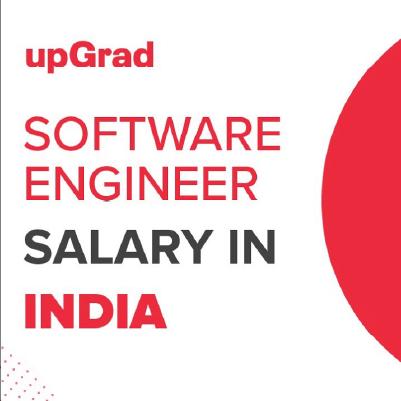

Software Engineer Salary In India | upGrad
10:08:00
37,153 views
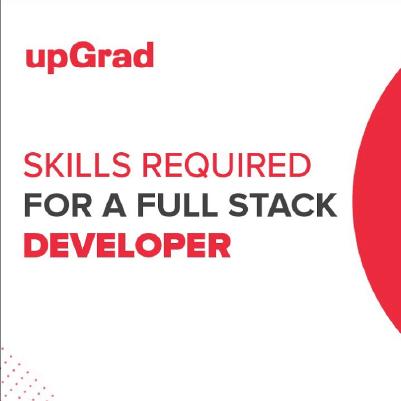

Skills Required to become a Full Stack Developer | upGrad
6:37:00
14,200 views
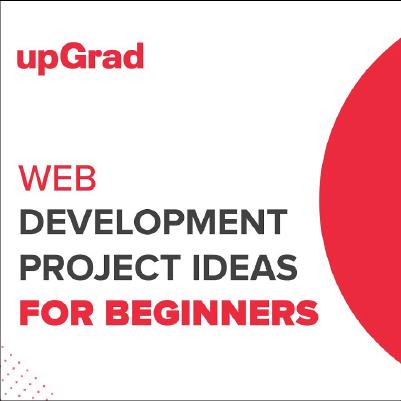

Web Development Project Ideas | upGrad
11:10:00
70,039 views
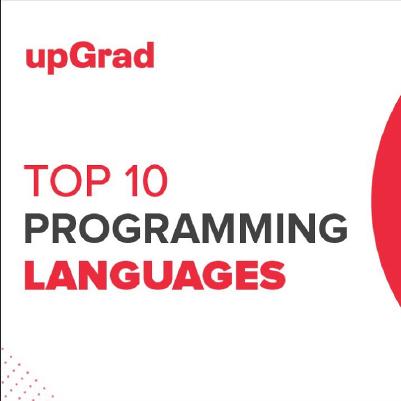

Top 10 Programming Languages | Best Programming Languages to Learn | upGrad
5:46:00
1,592 views
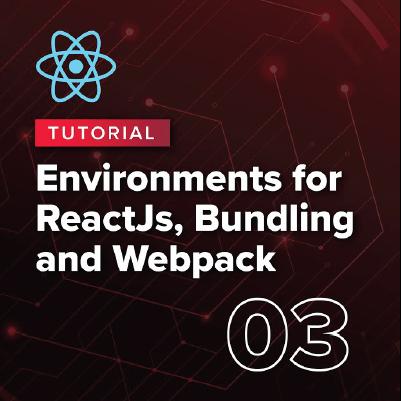

Environments for ReactJs, Bundling and Webpack | React Js Basics | upGrad Technology
5:37:00
234 views
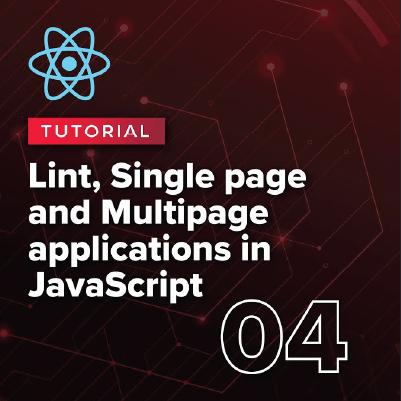

Lint, Single page and Multipage applications in JavaScript | React Js Basics | upGrad Technology
4:20:00
37 views
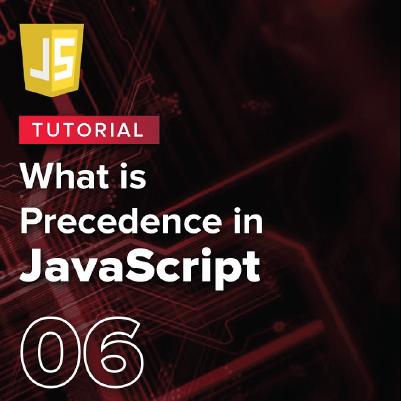

What is Precedence in JavaScript? | JS Tutorial for Beginners 06
5:58:00
78 views
Software Development Blogs
You Might Like To Read

Are you confused about making a computer science project? Check out this article to find top 12 interesting and creative project ideas.

Pavan Vadapalli

Click here to find some unique and impressive ideas for final year projects that are very useful for those studying computer science and related subjects

Rohan Vats

Looking for projects that will help you strengthen your tech career? We have curated a list of the top 10 minor project topics that will help you develop the required skills.

Pavan Vadapalli

Are you looking for suitable engineering projects? Final year students and young professionals can choose from these trending topics to be industry-ready!

Rohit Sharma

When two classes, modules, or components have low dependencies on each other, it is called loose coupling in Java.

Rohan Vats

Discover top robotics projects and ideas for beginners and intermediates, learn about their learning outcomes, and understand the importance of robotics skills in the job market.

Pavan Vadapalli

In this post, we're going to discuss the trending technical courses for IT jobs. Technical courses are designed to provide knowledge to aspirants.
_upGrad Dweb-5e9cf18bbadd4ab1bd5c9ae20e34e9a6.svg)
upGrad
Learner Support and Services
How Will upGrad Supports You
Receive unparalleled guidance from industry mentors, teaching assistants, and graders
Receive one-on-one feedback from our seasoned tech faculty on submissions and personalized feedback to improvement
Our Syllabus is designed to provide you with ample of industry relevant knowledge with examples
You can write to us via studentsupport@upgrad.com or for urgent queries use the " Talk to Us" option on the learning platform
We are always there to support our online software course learners on demand.
Timely doubt resolution by industry experts and software course peers
100% expert verified responses to ensure quality learning for all software courses.
Personalized expert feedback on all the online software course assignments and projects
Regular live sessions for our online students by experts to clarify concept-related doubts
Frequently Asked Questions about Core Java
1. What is the major difference between Core Java and Advanced Java?
Core Java is widely used for general-purpose app development, whereas Advanced Java is useful for developing mobile and web-based applications.
2. Why is JVM so important in Core Java?
JVM (Java Virtual Machine) provides a runtime environment to run Java bytecode. Using it, Java programs can operate on any device and OS and optimize program memory.
3. Why can Core Java run anywhere after being written once?
The bytecode in Core Java lets it adopt the “write once and run anywhere” approach. So, it can convert programs into class files, i.e., Byte Code. A Byte Code is an intermediate language between source and machine code. Therefore, Core Java needs to be just written once and can be executed anywhere.The bytecode in Core Java lets it adopt the “write once and run anywhere” approach. So, it can convert programs into class files, i.e., Byte Code. A Byte Code is an intermediate language between source and machine code. Therefore, Core Java needs to be just written once and can be executed anywhere.
4. Can I learn core Java in one month?
Yes! Core Java demands constant hard work and practical experience, which can be easily learned within a month. Being a vast language, even experienced developers don’t have mastery of all the concepts of Core Java. Still, you can master the core concepts and slowly learn their intricacies through practical applications.
5. Is core Java easy to learn?
The word core defines the fundamental concept of anything, and the ‘Core Java’ phrase defines the basic Java, which covers the fundamental concepts of Java programming language. Since it entails all the basic concepts of Java, it is usually easy to learn. Beginners can easily learn it if they carefully focus on it, and then they can master the concepts of Java.
6. How to practice core Java?
Online platforms like Tutorials Point, Codecademy, Udemy, and Coursera are the best means to practice Core Java. You can easily solve the exercises beginning from basic to complex on these platforms. Moreover, on many of these platforms, a sample solution is provided for every exercise.
7. Is core Java and J2EE the same?
Core Java is useful for developing a desktop-based application. It usually refers to the Java SE, which comprises the Java Language, JDK, and the JVM. J2EE (Java 2 Platform Enterprise Edition) is a platform-independent, Java-centric environment that is useful for developing and deploying online web-based enterprise apps. When it comes to developing a general java application, you can use Core Java. On the other hand, J2EE is a computing platform consisting of core java with a set of powerful libraries.
8. Is it enough to learn Core Java enough for selenium?
Most of the Selenium testers use Java programming to write Selenium Test Script. It is therefore recommended to learn Core Java first and then Java programming. Note that Core Java or Java Standard Edition is enough for Automated Testing with Selenium. Advanced Java is not needed.
9. Is it enough to learn Core Java for Android development?
Android development is the combination of Core Java and XML. So, if you want to learn Android development, Core Java is not enough. You should also learn XML. Note that Android development can be learned along with learning Core Java.
10. Does Java use multiple cores?
Yes, Java uses multiple cores. You can use multiple cores through multiple threads. However, using more threads than the number of cores existing in a machine can waste resources. To know the number of cores, you can use availableProcessors().
11. What are Core Java technologies?
The application programming interfaces (APIs) and Core Java technologies are the basis of the Java Platform, i.e., Standard Edition (Java SE). They are extensively utilised in all the classes of Java, from Java EE applications to desktop applications.
12. What are Core Java skills?
Core Java skills include understanding the class loading process, working with class loaders, familiarity with all primitives types and operators in Java, and writing simple client-server TCP services. The ability to check generics, enums and exceptions are also some of the Core Java skills.
13. Are Core Java skills enough to get a job?
For any fresher, it is challenging to embark on a career in Core java. A decent knowledge of Core Java is enough for fresher graduates trying to get a job in an organisation. However, in the long run, this is not enough. The knowledge of advanced Java concepts like Servlets, JDBC, JSP, and frameworks like Hibernate and Springs will help you a lot in your future career.
14. Which are the key topics to learn in Core Java programming?
The most essential Core Java programming topics are -Java Fundamentals, Class, Objects, Types of Classes, Packages, Data Types, Variables, Constraints, Literals, Methods, Constructor, Modifiers, Static Keyword, Final Keyword, and Inner Class.
15. How can you become a Java programmer?
The first step to becoming a Java programmer is learning Java thoroughly and improving your Java project management skills. You can then practice your Java programming skills and develop a portfolio to showcase to prospective employers. The next step can be joining the Java Community to learn from your peers. The final step is resume building and applying to various organisations to become a Java programmer.


upGrad Learner Support
Talk to our experts. We are available 7 days a week, 10 AM to 7 PM
Indian Nationals
Foreign Nationals
Disclaimer
The above statistics depend on various factors and individual results may vary. Past performance is no guarantee of future results.
The student assumes full responsibility for all expenses associated with visas, travel, & related costs. upGrad does not .




















